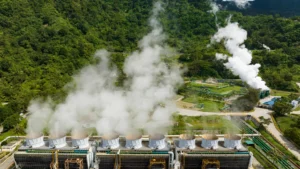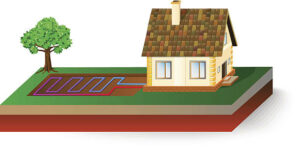So, you’ve made the smart move to install solar panels. You’re soaking up the sun, saving on electricity, and feeling good about your carbon footprint. But now you’re wondering—do I need to clean these things? And if so, how often? And what’s the right way to do it without messing them up?
Let’s break it all down in simple terms. Because while solar panels are pretty low maintenance, they’re not completely hands-off.
Why Clean Solar Panels?
You might be thinking, Don’t rain and wind keep them clean enough? That’s a fair question. And yes, Mother Nature does help a little. But here’s the thing—over time, dust, dirt, bird droppings, leaves, pollen, and even smog can build up on your panels. And when they’re dirty, they don’t perform at their best.
Dirty Panels = Less Power
Solar panels work by converting sunlight into electricity. When dirt or grime blocks the sunlight—even just a little—it reduces their ability to generate energy. It’s like wearing sunglasses indoors. You’re still getting some light, but not nearly enough.
Studies have shown that dirty panels can lose between 5% to 25% of their efficiency, depending on the amount of buildup and your environment. That’s a big deal if you’re trying to maximize your energy savings.
When Should You Clean Your Solar Panels?
Okay, so you should clean them. But how often?
Well, it depends. Your location, weather, and even the tilt of your panels can affect how quickly they get dirty. Here’s a general guide to help you figure it out:
Once or Twice a Year (for Most Homes)
If you live in a relatively clean area with decent rainfall, a once or twice-a-year cleaning is usually enough. Spring and late summer are good times—once after the pollen settles, and once before the fall debris hits.
More Often if You Live in These Conditions:
- Dusty or dry climates (like desert areas)
- Near farmlands or construction zones
- Near busy roads or industrial zones
- Close to trees (hello, bird poop and leaves!)
- Flat or low-angled panels (water doesn’t run off as easily)
If any of these sound like your situation, consider cleaning your panels every 3 to 4 months.
Signs It’s Time to Clean:
- Your solar production drops for no obvious reason
- You can see a visible layer of dirt or film
- You’ve had a long dry spell with no rain
- Your monitoring system shows reduced output from certain panels
How to Clean Solar Panels (Without Ruining Them)
Let’s talk about the how. The good news is, cleaning your panels isn’t rocket science. But you do need to be careful not to scratch the surface, damage the wiring, or risk your own safety.
Step-by-Step Cleaning Guide:
- Pick a Cool, Cloudy Morning
Avoid cleaning in direct sunlight—the panels get hot and water can evaporate too fast, leaving streaks. Early morning or late afternoon is ideal. - Turn Off the System
Always shut off the system before cleaning, just to be safe. Check your manufacturer’s instructions for how to do this. - Use a Soft Brush or Sponge
No harsh scrubbing! Use a soft brush with an extension pole or a sponge mop. Never use anything abrasive—scratches can affect performance. - Rinse with a Garden Hose
A simple rinse with clean water will do the trick in most cases. Avoid using high-pressure washers—they can damage the seals and glass. - Use Mild Soap if Needed
If your panels are extra grimy, use a mix of water and a small amount of mild dish soap. Rinse thoroughly afterward. - Let Them Air Dry
Skip the towel or cloth. Just let the panels dry naturally to avoid scratching or streaks.
What Not to Do
Let’s cover a few common mistakes to avoid while you’re at it:
- Don’t use detergents with harsh chemicals
- Don’t climb on your roof if it’s steep or slippery—it’s not worth the risk
- Don’t use metal tools, squeegees, or scrapers
- Don’t forget to turn off your system before starting
If your panels are hard to access or you’re unsure about cleaning them yourself, it’s totally fine to call in the pros. Many solar companies offer maintenance packages or professional cleanings at affordable rates.
DIY vs. Professional Cleaning
So, should you DIY or call a professional?
Go DIY If:
- Your panels are easily accessible (like on a ground-mounted system or single-story roof)
- You’re comfortable working with water and tools
- The dirt is light or seasonal
Hire a Pro If:
- Your panels are hard to reach or on a steep roof
- You notice heavy buildup, mold, or bird nests
- You want a full system check (some pros inspect wiring and inverters too)
- You just don’t feel like doing it yourself (no shame in that!)
Professional cleanings typically cost $100 to $300 depending on your location and number of panels.
Does Cleaning Really Make a Big Difference?
Here’s the deal—cleaning isn’t going to double your output overnight. But if your panels are noticeably dirty, giving them a good wash can boost production by 5% to 15%, sometimes even more.
That boost might not seem huge, but over the course of a year, it adds up—especially if you’re relying heavily on solar for your home or business.
What About Automatic Cleaning Systems?
If you’re all about convenience, there are automated systems that can clean your panels for you. These are more common in large commercial installations, but they’re becoming more available for residential systems too.
Options include:
- Robotic cleaners that run across the panels
- Spray systems that rinse the panels on a timer
- Hydrophobic coatings to repel water and dust
They’re not cheap, but if you live in a dusty area or hate climbing ladders, it might be worth looking into.
Bonus Tip: Use a Monitoring App
Most modern solar systems come with apps or dashboards that let you track your panel performance. If you notice a steady dip in production that doesn’t match the weather patterns, it might be time to break out the cleaning gear.
Regular monitoring can save you money and keep your system running at its peak.
Conclusion: Keep It Clean, Keep It Efficient
Here’s the bottom line—clean solar panels are happy solar panels. A little maintenance goes a long way in keeping your system efficient and your energy savings on track.
You don’t need to clean them weekly, and you don’t need to scrub them with fancy tools. Just stay on top of seasonal grime, rinse them off when needed, and check in with a professional every now and then.
Want help making sure your system is clean and running at full speed? Contact Envirotech Geothermal for expert advice, maintenance options, and everything you need to get the most out of your solar investment.


